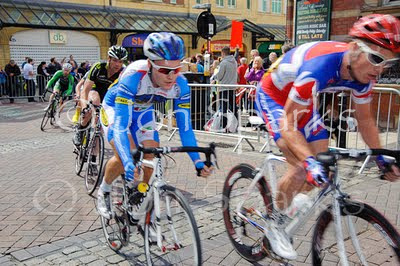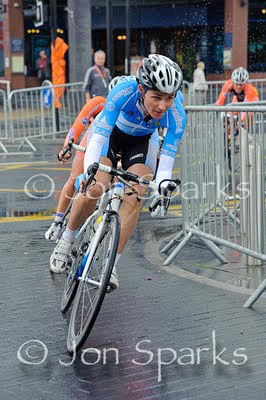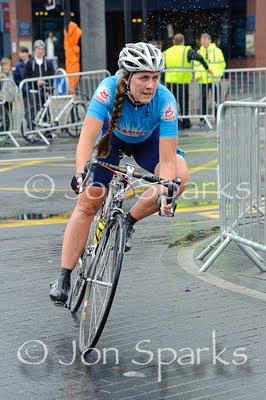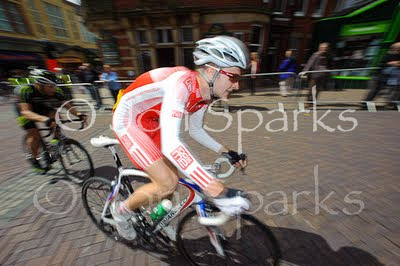When only an SLR will do
After all my speculation about compacts and CSCs, a couple of recent shoots have reminded me just why, sometimes, it has to be an SLR.
1: Low Light
I’ve recently done a couple of sessions shooting for The Cheetahs, a wheelchair sports club based in Thornton, Lancashire. Before I go on with the tech-talk, I do want to say what a privilege this has been. The great thing about The Cheetahs is that it’s a wheelchair sports club for all kids, not just “disabled”. It’s a brilliant, brilliantly simple, idea that cuts through preconceptions and break down barriers. Much of the time when I’m shooting these kids I can’t even tell which are “disabled” and which are “able-bodied” – and that’s the point.
From the photographic point of view, however, shooting these sessions is not without its challenges. They take place in a sports hall which isn’t particularly well lit, but I’m trying to shoot some pretty fast action (wheelchairs move). In one session I used my Nikon D7000, in the other I used my D700. For what I hope are obvious reasons, I didn’t use flash. So let me just give you some numbers:
D7000: ISO 3200, typical exposure 1/200 at f/2.8
D700: ISO 6400, typical exposure 1/320 at f/2.8
Those are not superfast shutter speeds and you can definitely see some motion blur around the edges in some shots (e.g. the hands of a child shooting basketball, spokes of the wheel in a chair moving at speed) but it’s manageable and even adds dynamism to many images.
(At the moment, under the terms of my agreement with The Cheetahs, I don’t have permission to use these images myself. I’m hoping we can use these shots more widely, perhaps in an exhibition, so in future I may be able to show you what I've been talking about).
All those numbers are important: aperture, shutter speed and ISO are the three points of the exposure triangle, and any serious photographer needs to have all three in mind pretty much all the time. But in this case it’s the ISO numbers which are particularly interesting. Shooting at ISO 3200 and 6400 I’ve been able to get really nice results, still with good dynamic range, vibrant colour and remarkably little noise.
The images have had a little noise reduction applied in Adobe Lightroom, but only a little. Noise is certainly visible when viewing the images at 100%, but it’s hardly obtrusive, and certainly doesn’t obscure fine detail like hair, eyelashes or the weave of a shirt. And remember, 100% view is blowing the images up to the equivalent of a 48” print (in the case of the D7000). On a full screen view it’s barely detectable at all.
There’s no question that you wouldn’t get these sorts of results from a compact. Even a really good compact (like the Panasonic Lumix DMC-LX5 I looked at recently) shows obvious noise at ISO 1600. Other failings like muddy colours and truncated dynamic range will also show up even in small enlargements. At ISO 3200 I’d class it as marginal even for web use, and quite hopeless for big prints.
With their larger sensors, compact system cameras should do much better. The problem here is more likely to be the availability of fast lenses. The only f/2.8mm lens currently available for Sony’s NEX cameras is a 16mm wideangle, for example. You can use Sony α lenses with an adaptor, but using large lenses like an 80–200mm f/2.8 on these tiny bodies is weird, to say the least. But talking about handling issues takes me on to the second shoot...
2: High Speed
Yesterday I was in Preston city centre shooting cycle racing, including the British Cycling Women's National Circuit Race Championships and the final round of the Elite Men's Race Series. The morning was showery and the roads were still damp for the women’s race, and the light wasn’t great: I was glad to be able to shoot at ISO 800. This is hardly extreme: CSCs and most compacts will produce pretty decent results, though I’d be looking critically at the dynamic range from the compact cameras. But high ISO performance isn’t really the issue.
Cycle racing is fast. We’re talking about riders in some cases travelling at 30mph and also really close – close enough to touch at some points on the course and certainly close enough to feel the slipstream. This combination of high speed and close range demands fast reactions from every part of the system, including the photographer. In particular, as far as the camera is concerned, it demands rapid autofocus performance and minimal shutter lag.
Autofocus
I shot these images with my D700, which has an agile focusing system using 51 focus points to track moving subjects. Like other DSLRs, the D700 has phase-detection autofocus. Without going into too much detail, this is fast and accurate. Compact System Cameras, on the other hand, have contrast-detect AF systems, which are much slower. They’re adequate for a lot of subjects but nowhere near good enough to follow focus on a racing cyclist.
If I were shooting, say, mountain biking, with a CSC, even though recreational mountain biking is considerably slower than road racing, I’d probably have to adapt my approach. This might well be done by pre-focusing and waiting for the rider to ‘hit the mark’.
In fact for some of the Preston shots, standing by the exit of the corner where the riders were almost touching the barriers on which I was leaning, I did switch to manual focus anyway, and prefocus at the appropriate distance. It’s not that I don’t think the camera’s AF system could keep up but seeing the rider come into focus in the viewfinder helped me time the shot.
Shutter lag
It was summed up by a guy standing next to me during part of the men's race. I overheard him remark to his companion, “I’m not getting it, it’s too fast; I’ll try switching to video instead”. The reason he wasn’t getting it may have been that his (compact) camera couldn’t focus fast enough; it may also have been due to shutter lag. With the SLR, when I press the shutter the response is almost instant. With digital compacts the delay between pressing the button and actually taking the shot used to be, in many cases, half a second or more. Most compacts are a lot better now but when you’re used to the instancy of an SLR the slight lag is still noticeable – and with cyclists hurtling past, even a slight delay is enough to miss the shot.
CSCs ought to do better but it ain’t necessarily so: my colleague Chiz Dakin reports that her Olympus E-PL1, for example, does have a tiny but perceptible shutter delay – even when prefocusing, where the delay can’t be attributed to the AF catching up.
Now, I’ll say it again, cycle-racing, especially city-centre criterium racing with its close-quarters, high-speed action, is a very tough test for a camera. CSCs may well do fine in lots of less demanding situations. But what’s abundantly clear is that they will have to improve leaps and bounds before they can genuinely compete with SLRs across the board.
Comments
No comments posted.
Loading...
|
© Jon Sparks





